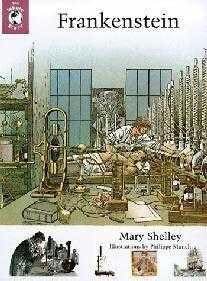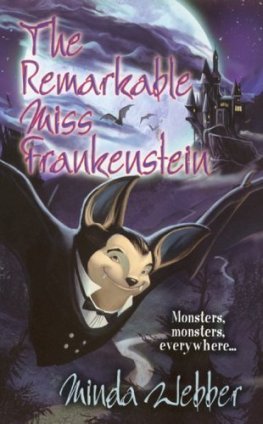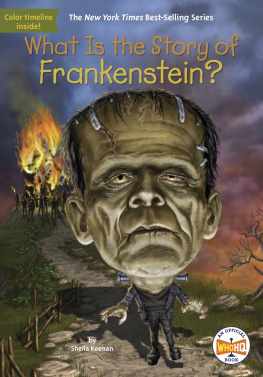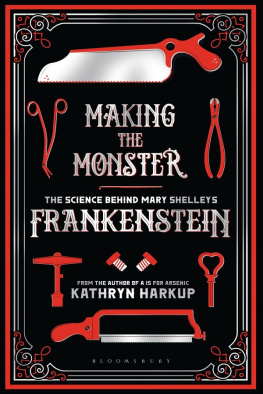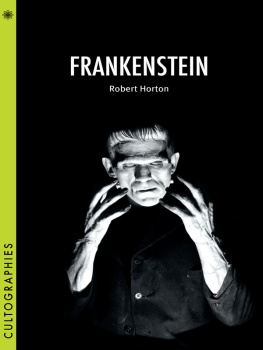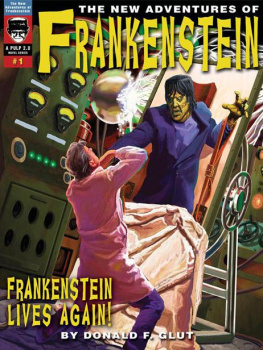Elizabeth Young - Black Frankenstein
Here you can read online Elizabeth Young - Black Frankenstein full text of the book (entire story) in english for free. Download pdf and epub, get meaning, cover and reviews about this ebook. year: 2008, publisher: NYU Press, genre: Art. Description of the work, (preface) as well as reviews are available. Best literature library LitArk.com created for fans of good reading and offers a wide selection of genres:
Romance novel
Science fiction
Adventure
Detective
Science
History
Home and family
Prose
Art
Politics
Computer
Non-fiction
Religion
Business
Children
Humor
Choose a favorite category and find really read worthwhile books. Enjoy immersion in the world of imagination, feel the emotions of the characters or learn something new for yourself, make an fascinating discovery.

- Book:Black Frankenstein
- Author:
- Publisher:NYU Press
- Genre:
- Year:2008
- Rating:3 / 5
- Favourites:Add to favourites
- Your mark:
- 60
- 1
- 2
- 3
- 4
- 5
Black Frankenstein: summary, description and annotation
We offer to read an annotation, description, summary or preface (depends on what the author of the book "Black Frankenstein" wrote himself). If you haven't found the necessary information about the book — write in the comments, we will try to find it.
Black Frankenstein — read online for free the complete book (whole text) full work
Below is the text of the book, divided by pages. System saving the place of the last page read, allows you to conveniently read the book "Black Frankenstein" online for free, without having to search again every time where you left off. Put a bookmark, and you can go to the page where you finished reading at any time.
Font size:
Interval:
Bookmark:
Thank you for buying this ebook, published by NYU Press.
Sign up for our e-newsletters to receive information about forthcoming books, special discounts, and more!
Sign Up!
A publisher of original scholarship since its founding in 1916, New York University Press Produces more than 100 new books each year, with a backlist of 3,000 titles in print. Working across the humanities and social sciences, NYU Press has award-winning lists in sociology, law, cultural and American studies, religion, American history, anthropology, politics, criminology, media and communication, literary studies, and psychology.
Black Frankenstein
America and the Long 19th Century
GENERAL EDITORS
David Kazanjian, Elizabeth McHenry, and Priscilla Wald
Black Frankenstein:
The Making of an American Metaphor Elizabeth Young
Elizabeth Young

NEW YORK UNIVERSITY PRESS
New York and London
www.nyupress.org
2008 by New York University
All rights reserved
Extract from Dreaming Frankenstein from Dreaming Frankenstein and Collected Poems by Liz Lochhead is reproduced by permission of Polygon, an imprint of Birlinn Ltd. (www.birlinn.co.uk).
A portion of chapter 4 originally appeared in Here Comes the Bride: Wedding Gender and Race in Bride of Frankenstein, Feminist Studies 17:3 (fall 1991): 40337.
LIBRARY OF CONGRESS CATALOGING-IN-PUBLICATION DATA young, Elizabeth.
Black Frankenstein : the making of an American metaphor /
Elizabeth Young.
p. cm. Includes bibliographical references and index.
ISBN13: 9780814797150 (cloth : alk. paper)
ISBN10: 0814797156 (cloth : alk. paper)
ISBN13: 9780814797167 (pbk. : alk. paper)
ISBN10: 0814797164 (pbk. : alk. paper)
1. American literature White authors History and criticism.
2. American literature African American authors History and criticism. 3. African Americans in literature. 4. Race in literature. 5. Race relations in literature. 6. Frankenstein (Fictitious character) in literature. 7. Frankenstein (Fictitious character) Political aspects. 8. Monsters in literature. 9. Metaphor in literature. 10. Monsters in motion pictures. I. Title.
PS173.N4Y68 2008 810.9'352996073 dc22 2008008049
New York University Press books are printed on acid-free paper, and their binding materials are chosen for strength and durability. We strive to use environmentally responsible suppliers and materials to the greatest extent possible in publishing our books.
Manufactured in the United States of America
c 10 9 8 7 6 5 4 3 2 1
p 10 9 8 7 6 5 4 3 2 1
To Laura M. Green and William A. Cohen
1. Frank Bellew, The Modern Frankenstein
3. Atlanta University Bulletin
16. Jerry Yulsman, Dick Gregory photograph
Many friends, colleagues, and institutions have supported this project over the long period of its gestation. I began thinking about Frankenstein many years ago, under the expert tutelage of Catherine Gallagher, and I thank her for this. Most recently, New York University Press has welcomed this project, and I am grateful to Eric Zinner, Emily Park, Despina Papazoglou Gimbel, Andrew Katz, Martin Tulic, two anonymous readers, and others at the Press. A fellowship from the George A. and Eliza Gardner Howard Foundation provided crucial sabbatical support. Along the way, others have published, reprinted, or otherwise encouraged my writing on topics related to Frankenstein, most of which is not in this book but all of which influenced it: Rhona Berenstein, Ken Gelder, Barry Keith Grant, Jon Lewis, Eric Smoodin, and the editors of Camera Obscura and Feminist Studies.
Many people at Mount Holyoke College have advanced this project. I thank the office of the Dean of Faculty including Donal OShea and Penny Gill for substantial support, including a Faculty Fellowship. I thank my colleagues in English, Gender Studies, Film Studies, and American Studies, particularly Christopher Benfey, Robin Blaetz, Anthony W. Lee, Amy Martin, Mary Renda, Ajay Sinha, Paul Staiti, Thomas Wartenberg, and Donald Weber. Local colleagues Bettina Bergmann, Anna Botta, Darcy Buerkle, Barbara Kellum, and, especially, Dana Leibsohn greatly assisted with the analysis of visual material. The Nineteenth-Century American Women Writers Study Group has provided great collegiality. Staff at the Mount Holyoke College Library, Smith College Library, American Antiquarian Society, Atlanta University Library, Harvard Theatre Collection, British Library, and Museum of Modern Art have been very helpful. Invaluable assistance was provided by James Gehrt and Aime DeGrenier of Mount Holyoke Library and Information Technology Services and by Hamenth Swaminathan.
Double thanks go to Judith Frank for her indispensable friendship and support of this and previous projects. For assistance of various kinds, I am grateful to the following colleagues and friends: Awam Amkpa, Sabrina Barton, Lisa Beskin, Ian Conrich, Simone Davis, Don Dingledine, Elizabeth Garland, Nina Gerassi-Navarro and Ernesto Livon-Grosman, Susan Gillman, Teresa Goddu, Bruce L. Hay, Karen Jacobs, Amy Kaplan, Carolyn Karcher, Jonathan D. Katz, Annette Kuhn, Caroline Levander, Robert Levine, Mary Loeffelholz, Lisa Long, Susan Lurie, Tania Modleski, Christen Mucher, Samuel Otter, Shirley Samuels, Karen Snchez-Eppler, Jackie Stacey, Michelle Stephens, and Trysh Travis. I greatly appreciate the vital encouragement given by Janice Dumond, Elissa Forman, Karen Heath, Lisa Hunter, Marion Kozak, Candida Lacey, Bridget Ryan, the Systors, and Dorothy Wedderburn. I have received much sustenance from family: Alfred, Marilyn, Sarah, Thomas, Emily, Jeff, Noah, Ruby, Davia, Isabel, and Frankie.
The dedication is to Laura M. Green and William A. Cohen brilliant readers, steadfast supporters, excellent friends without whom this book would never have come to be.
You can teach an old metaphor new tricks. In the Frankenstein story, first introduced in the novel by Mary Shelley in 1818 and made famous on film by James Whale in 1931, a monster, assembled from corpses and reanimated, rebels violently against his creator. The Frankenstein story has a long history of being used as a political metaphor, and at the start of the twenty-first century, it continues to shape political debate. Consider, for example, critiques of U.S. foreign policy in the wake of 9/11. In We Finally Got Our Frankenstein, filmmaker Michael Moore compares Iraqi leader Saddam Hussein to the Frankenstein monster: We had a virtual love fest with this Frankenstein whom we (in part) created. And, just like the mythical Frankenstein, Saddam eventually spun out of control. He would no longer do what he was told by his master. Saddam had to be caught. Moore considers Hussein one of many monsters created by the U.S. government, including Osama bin Laden Our other Frankenstein and a roster of right-wing dictators: We liked playing Dr. Frankenstein. We created a lot of monsters the Shah of Iran, Somoza of Nicaragua, Pinochet of Chile and then we expressed ignorance or shock when they ran amok and massacred people.
Moore uses the Frankenstein metaphor to condemn the U.S. government for playing Dr. Frankenstein, conducting a scientific experiment that is also a love fest gone wrong. Novelist Carlos Fuentes offers a similar cautionary tale but links The monster to a familial metaphor: Saddam Hussein was Saddam Hussein because the United States gave him all possible support. The United States is extraordinarily gifted in creating monsters like Frankenstein. Then one fine day they discover that these Frankensteins are dreadful. However, for twenty years they were the spoilt children, their proteges, and the babies of the United States.
Next pageFont size:
Interval:
Bookmark:
Similar books «Black Frankenstein»
Look at similar books to Black Frankenstein. We have selected literature similar in name and meaning in the hope of providing readers with more options to find new, interesting, not yet read works.
Discussion, reviews of the book Black Frankenstein and just readers' own opinions. Leave your comments, write what you think about the work, its meaning or the main characters. Specify what exactly you liked and what you didn't like, and why you think so.

